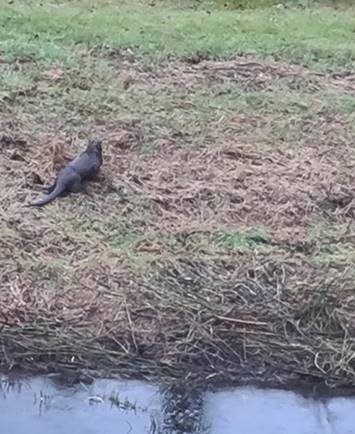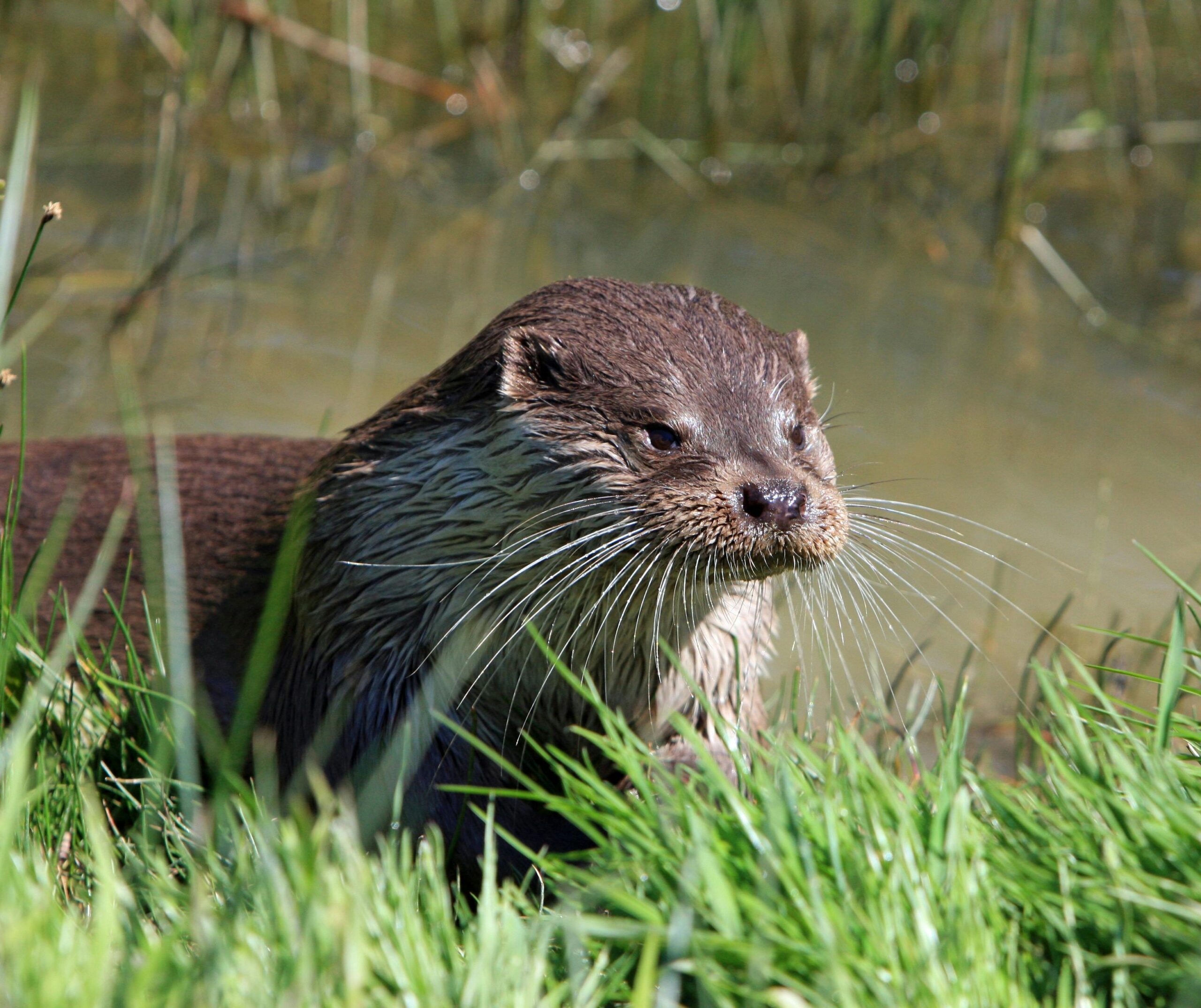Scotland is a European stronghold for the otter, a species of land, river and sea. So we were delighted to discover an otter had decided to have some lunch and a swim down in our suds pond. Great excitement was generated in the nearby offices and as the lovely creature confidently swam around and was seen diving down several times to catch something for lunch – surprisingly right in the middle of the day and unfazed by the Prime Four staff close by on a site walk around.
The otter was lost from most of England and Wales between the 1950s and the 1970s because of pesticide pollution of waterways. But it survived in Scotland’s cleanest bodies of water in the north and west.
Today, the species is flourishing across Scotland, and recovering well across the UK as waterways are cleaned up. The Scottish population is estimated to be around 8000 otters.
Otters are largely solitary, semi-aquatic mammals that get most of their food from lochs, rivers or the sea. The Scottish population has an unusually high proportion (perhaps 50% or more) of coastal-dwelling individuals, which feed almost exclusively in the sea. An otter must eat around 1–1.5kg of prey daily.
Coastal otters are sometimes called ‘sea otters’, but they are exactly the same species as the animals that live further inland. Mainly active during the day, coastal otters generally have much smaller home ranges than their riverine counterparts, because of the abundance of fish and crustacean prey in inshore waters. Otters must keep their fur free of salt using freshwater for it to remain effective as insulation.
In freshwater, otters feed:
- mainly on fish such as trout, salmon and eels
- on spawning frogs and toads in spring
- occasionally on mammals and birds
Otters that live in freshwater habitats are largely nocturnal and occupy very large home ranges (around 32km for males and 20km for females).
‘Holts’ are used for shelter and breeding and may take the form of a burrow, natural hole, cave or other structure (including man-made ones). Otters may also rest or seek temporary shelter in above-ground structures known as ‘couches’. Britain’s otters may breed during any month of the year.
The UK Wild Otter Trust is a registered charity and they collect information and sightings of otters – we have logged our little Prime Four visitor with them.
*Information taken from Nature Scotland.
A snapshot of our visitor:

